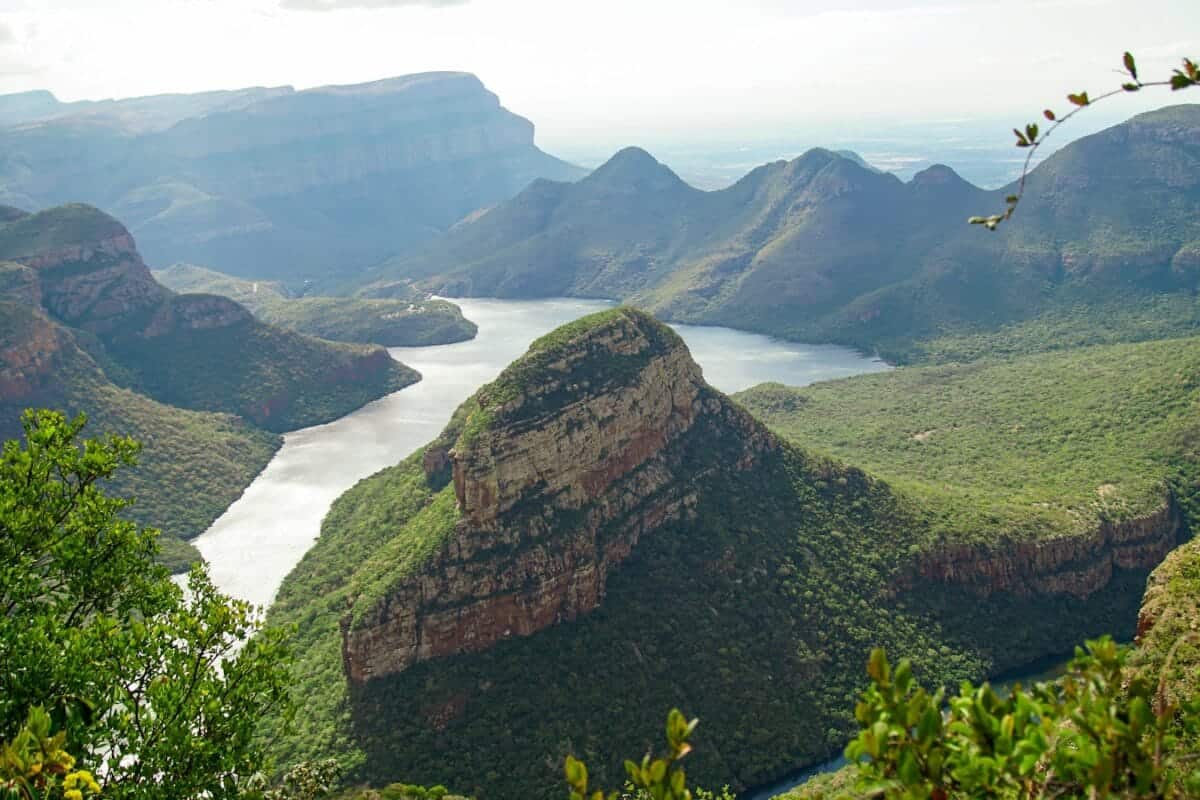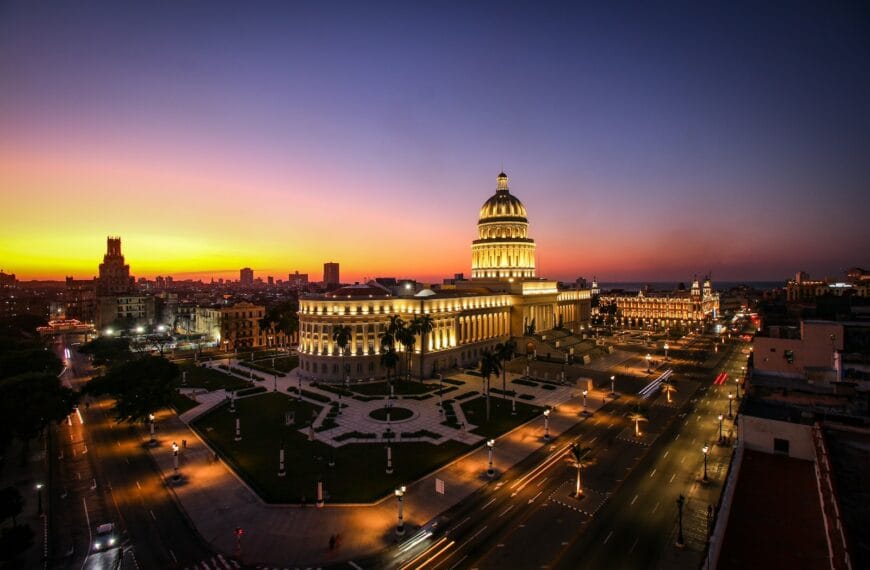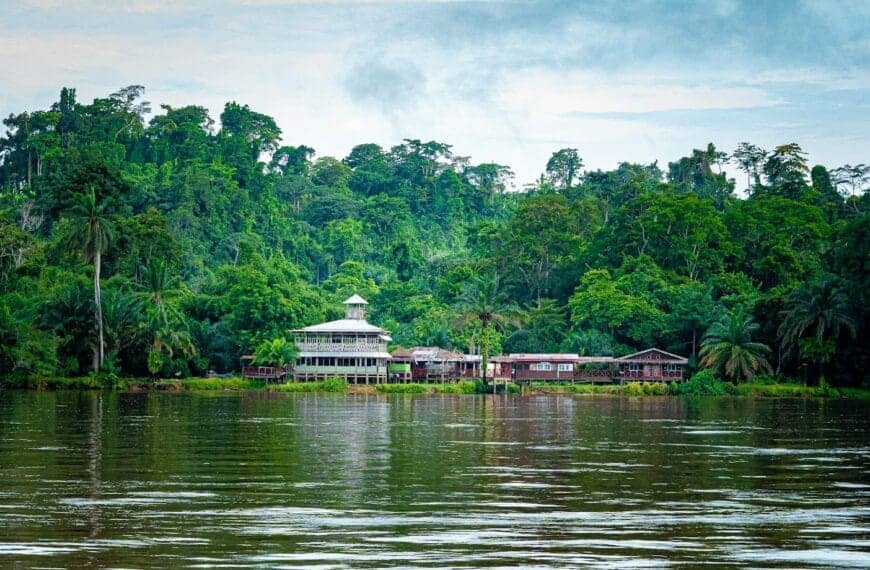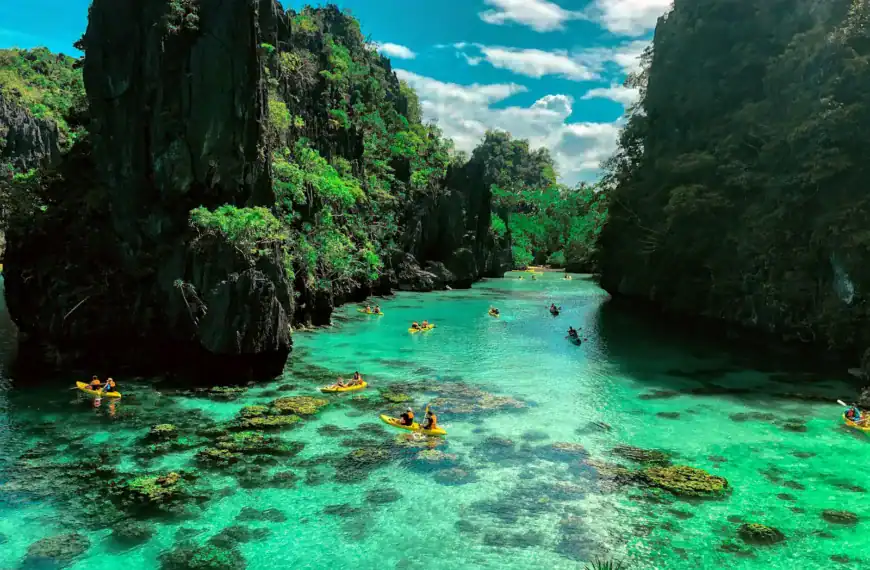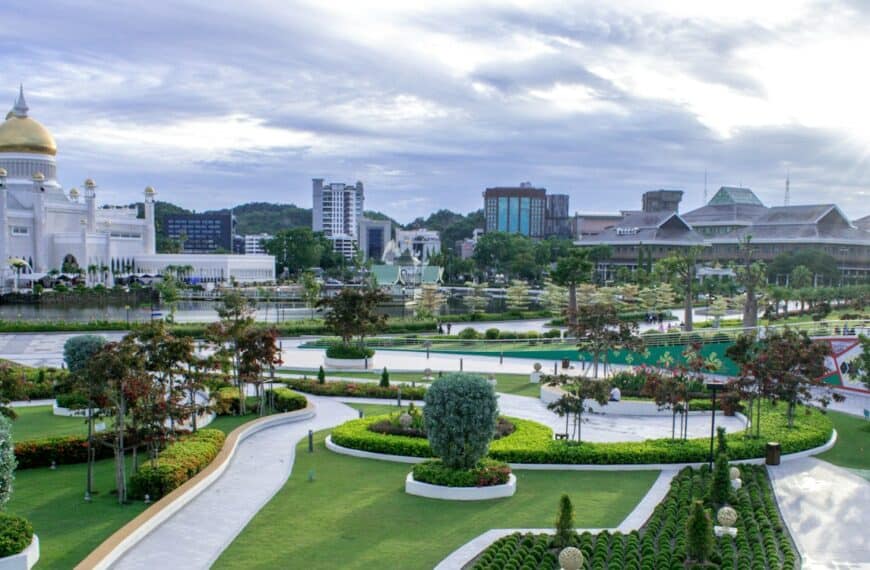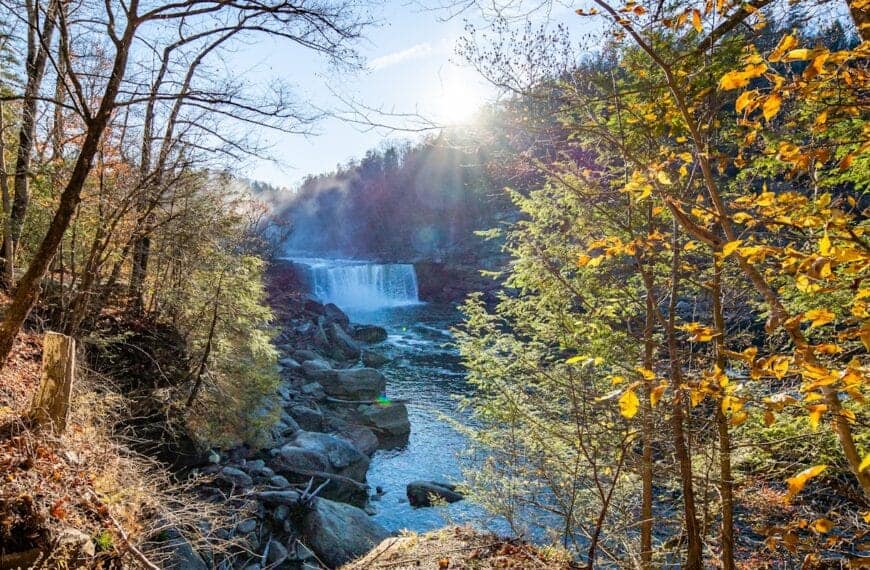Southern Africa Travel Guide: Safaris, Deserts & Cultural Journeys
Intro to Southern Africa Travel Guide
Southern Africa is a land of dramatic contrasts — where towering dunes give way to roaring waterfalls, and wildlife-rich savannas meet the rhythm of township jazz and tribal tradition. From the vineyards of South Africa to the elephants of Botswana, the canyons of Namibia to the islands of Mozambique, this region offers one of the most diverse and exhilarating travel experiences on Earth.
Start planning your journey with our complete Southern Africa travel guide — with regional highlights, top things to do, travel costs, and expert tips for safaris, road trips, and cultural immersion.
Countries to Explore in Southern Africa
Botswana | Eswatini | Lesotho | Madagascar | Malawi | Mozambique | Namibia | South Africa | Zambia | Zimbabwe
💡Quick Facts:
Destination: Southern Africa
Continent: Africa
Country: Multinational Region (includes South Africa, Namibia, Botswana, Zimbabwe, Zambia, Mozambique, Lesotho, Eswatini, Angola, Malawi)
Administrative Division: Regional bloc (often aligned with SADC – Southern African Development Community)
Area: ~6.7 million km² (total combined)
Population: ~210 million (regionally)
Density: Varies widely – from Namibia’s sparse deserts to Malawi’s dense lakefront villages
Capital: Regional capitals include Pretoria (South Africa), Windhoek (Namibia), Harare (Zimbabwe), Lusaka (Zambia)
Regions/Subregions: Kalahari Desert, Victoria Falls, Okavango Delta, Drakensberg Mountains, Garden Route, Cape Winelands
Official & Regional Languages: English (widely used), Afrikaans, Zulu, Xhosa, Tswana, Portuguese, Shona, Ndebele, Chichewa, Sesotho, Swahili
Currency: Multiple – South African Rand (ZAR), Namibian Dollar (NAD), Botswana Pula (BWP), Zambian Kwacha (ZMW), Mozambican Metical (MZN), U.S. Dollar (used in Zimbabwe)
Time Zone(s): SAST (UTC+2), CAT (UTC+2), WAT (UTC+1 – Angola only)
Airports: OR Tambo Intl (JNB), Cape Town Intl (CPT), Windhoek Hosea Kutako (WDH), Lusaka Intl (LUN), Harare Intl (HRE), Maputo Intl (MPM), Maun Intl (MUB – Okavango Delta)
Climate: Diverse – desert (Namibia), subtropical (Mozambique), Mediterranean (Cape), alpine (Lesotho), tropical savanna (Malawi/Zambia)
Known For: Safaris (Kruger, Chobe, Etosha), Victoria Falls (UNESCO), Cape Town, Okavango Delta (UNESCO), wine regions, wildlife migrations, indigenous San cultures, dramatic landscapes
🛂Arrival Info:
– Entry requirements vary per country; most offer visa-on-arrival or e-Visa for tourism
– SADC member countries may allow visa-free travel within the bloc
– South Africa, Namibia, Botswana, Zambia, and Mozambique have distinct entry rules
– Yellow fever certificate required if arriving from endemic zones
💉Health Info:
– Recommended vaccines: Hepatitis A & B, typhoid, yellow fever (where applicable), rabies (for remote travel)
– Malaria precautions required for Zambia, Zimbabwe, Malawi, Mozambique, northern Namibia, and Kruger Park
– Waterborne illness precautions advised in rural areas
– Major cities have good hospitals; rural care is limited – travel insurance essential
✅ Check travel insurance options for travel emergencies, delays, and medical needs abroad — get coverage here
✅ Stay Informed with Official Updates: World Health Organization – International Travel and Health | Travel health updates
🚨Travel Advisory:
– Generally safe in tourist areas; exercise caution in cities (e.g., Johannesburg, Lusaka) due to petty crime
– Road safety varies – self-driving across borders requires planning
– Political unrest sometimes affects Zimbabwe and Mozambique’s northern provinces
– Borders can have bureaucratic delays — always check regional advisories
✅ Stay Informed with Official Updates: US Travel Advisory | UK Foreign Travel Advice
📅Holidays:
– Major public holidays vary by country, but include:
– Freedom Day (Apr 27 – South Africa)
– Independence Day (Mar 21 – Namibia, Apr 18 – Zimbabwe, Jul 6 – Malawi)
– Heroes’ Day (various dates in Zambia/Zimbabwe)
– Africa Day (May 25 – region-wide)
– Christmas and New Year’s widely celebrated across all nations
– Harvest festivals and local tribal commemorations also occur throughout the year
💰Visitor Info:
– Currencies not interchangeable; exchange or withdraw locally
– ATMs widely available in cities, limited in rural areas
– Credit cards accepted at hotels, lodges, and cities; cash required in villages
– Tipping: 10%–15% standard in restaurants and safaris
– Budget: $50–$90/day | Mid-range: $120–$200/day | Luxury safari: $400+/day
– Park fees and inter-country flights can raise travel costs
✈️Airports:
– Johannesburg OR Tambo (JNB): Primary international hub
– Cape Town Intl (CPT): Key entry for South Africa’s Western Cape
– Maun (MUB): Gateway to Botswana’s Okavango Delta
– Livingstone (LVI) & Victoria Falls (VFA): Serve Zimbabwe/Zambia border
– Windhoek (WDH), Maputo (MPM), Lusaka (LUN): Regional access points
– Charter flights common for safari lodges and remote parks
✅ Delayed or canceled flight? Check if you’re eligible for compensation
🚍Transport:
– Cross-border buses (Intercape, Translux, local minibuses) connect major cities
– Regional flights (Airlink, FlySafair, FastJet, Proflight Zambia) essential for time-saving
– Car rental available; 4×4 recommended for remote routes
– Self-drive popular in Namibia, South Africa, Botswana – permits and border papers required
– Drive on the left in most countries (except Angola); carry IDP
– Some areas (e.g., Zimbabwe, Malawi) have fuel shortages — plan ahead
✅ Book reliable airport transfers and in-city rides in advance. Reserve your ride here
📶Connectivity:
– SIM cards cheap and widely available: Vodacom, MTN, Airtel, Mascom, MTC
– Coverage is good in cities and safari lodges; weak in wilderness regions
– Free Wi-Fi available in hotels, airports, and major cafés
– Roaming expensive — buy local SIMs or regional data bundles for best results
– eSIM supported in South Africa and Namibia (limited elsewhere)
✅ Stay connected abroad with affordable eSIM data packs. Get your eSIM here
📜Laws & Etiquette:
– Legal drinking age: 18; alcohol laws vary slightly across borders
– LGBTQ+ travelers safe in South Africa and Namibia; caution advised in Malawi, Zambia, and Zimbabwe
– Respect wildlife and cultural sites; never approach wild animals on foot
– Modest dress recommended in rural or tribal communities
– Crossing borders with drones, alcohol, or large cash amounts can raise issues — declare when required
🛡️Emergency Info:
– Emergency numbers differ by country; most use 112 or 10111 for police
– U.S. and UK embassies located in Pretoria, Windhoek, Lusaka, Harare, Maputo
– Medical evacuation (e.g., Okavango Delta or Vic Falls) may be required – ensure coverage
– Tourist protection units active in South Africa and Zimbabwe
✅ Use embassy locator tools: Embassies Worldwide
🌦️Weather:
– Dry season: May–October — ideal for safaris and outdoor adventure
– Wet season: November–April — lush landscapes, but some parks inaccessible
– Coastal areas (Mozambique) are humid year-round
– Summer (Oct–Mar): hot (30–40°C inland), afternoon thunderstorms common
– Winter (Jun–Aug): cool in highlands and desert nights; warm, dry days
✅ Stay prepared—check the weather forecast for your destination — Weather Forecast
What Makes Southern Africa Unique
Southern Africa stands apart for its:
- World-renowned safaris in Botswana, Zimbabwe, and Zambia
- Diverse landscapes, including deserts, savannah, mountains, and coastlines
- Multilingual cultures with influences from indigenous tribes, colonial legacies, and modern metropolises
- High-quality tourism infrastructure, ideal for both luxury and budget travelers
It’s a region where you can spot lions in the morning, hike to a waterfall by afternoon, and enjoy a gourmet dinner with local wine by evening.
Southern Africa by Region – Where to Go
This subregion covers several countries, each with its own landscapes, logistics, and specialties. Here’s how to break it down for planning:
South Africa
- A world in one country. Cape Town’s iconic Table Mountain and vineyards, Kruger’s legendary safari drives, and the Garden Route’s coastal beauty offer something for every traveler.
Namibia
- Home to the world’s highest dunes, lunar desert landscapes, and surreal sights like Deadvlei and Etosha’s salt pans. Perfect for photographers, overlanders, and solitude-seekers.
Botswana
- Top-tier safaris with a low-impact, luxury ethos. Explore the Okavango Delta by mokoro canoe, track big cats in Moremi, or cruise the Chobe River with elephants all around.
Zimbabwe
- Share one of the world’s greatest natural wonders — Victoria Falls. Zimbabwe offers budget-friendly safaris and UNESCO ruins (Great Zimbabwe), while Zambia is a haven for bush walks and adrenaline sports.
Zambia
- Zambia is one of Africa’s most rewarding yet often overlooked safari destinations. Enjoy quieter views of Victoria Falls from Livingstone, walk with a guide in South Luangwa—the birthplace of walking safaris—or canoe the Lower Zambezi River past hippos and crocodiles.
Mozambique
- A tropical contrast to inland safaris. Snorkel in Bazaruto, dive in Quirimbas, or soak up Afro-Portuguese island culture in Ilha de Moçambique. Great for slow travel and marine life.
Lesotho
- Two landlocked kingdoms with rich cultural traditions and mountainous landscapes. Lesotho is ideal for pony trekking and village life, while Eswatini offers festivals, craft markets, and reserves like Hlane.
Eswatini
- Africa’s last absolute monarchy, Eswatini blends compact natural beauty with rich cultural traditions. Witness vibrant events like the Reed Dance or Incwala Festival, go on safari in Hlane Royal National Park, and explore local craft markets and cultural villages. It’s also easy to add to a South Africa road trip—plus, the locals are famously welcoming.
Top Places to Visit in Southern Africa
These iconic destinations define the region — natural, cultural, and wild.
Wildlife & Safaris
- Kruger National Park (South Africa): Big Five safaris with self-drive or lodge stays.
- Okavango Delta (Botswana): UNESCO-listed inland delta brimming with life.
- Etosha National Park (Namibia): Famous for salt flats and floodlit waterholes.
- Hwange National Park (Zimbabwe): Massive elephant herds and diverse wildlife.
- South Luangwa (Zambia): Legendary for walking safaris and predator sightings.
Natural Landmarks
- Victoria Falls (Zambia/Zimbabwe): Mosi-oa-Tunya — “The Smoke That Thunders.” Best seen from both sides.
- Sossusvlei (Namibia): Towering red dunes in the Namib Desert.
- Blyde River Canyon (South Africa): Third-largest canyon in the world — great for hikes and views.
- Drakensberg Mountains (South Africa/Lesotho): Dramatic peaks and rock art hikes.
Cultural & Coastal Gems
- Cape Town: Beaches, wine, hiking, and history — all under Table Mountain.
- Maputo & Bazaruto Archipelago (Mozambique): Vibrant city life and island serenity.
- Great Zimbabwe Ruins: Medieval stone city — the region’s namesake and architectural wonder.
- Tofo Beach (Mozambique): Whale sharks, local seafood, and a boho vibe.
How to Choose Where to Go in Southern Africa
With such a broad canvas, focus your trip around these themes or mixes:
- For wildlife: Start in Kruger (SA), Etosha (Namibia), or Okavango (Botswana)
- For scenery: Combine Sossusvlei + Fish River Canyon or Drakensberg + Blyde River Canyon
- For culture & history: Add Lesotho, Eswatini, or Zimbabwe’s ruins and cities
- For beach escapes: Explore Mozambique’s coast or extend to South Africa’s Wild Coast or Cape Town
- For adrenaline: Try Zambia’s Zambezi rafting, bungee jumping at Vic Falls, or sandboarding in Namibia
Efficient 2–3 country combos:
- South Africa + Namibia (road trip friendly)
- Botswana + Zimbabwe + Zambia (shared safari corridors + Victoria Falls)
- Mozambique + Eswatini + Kruger (culture, coast, and wildlife loop)
- Cape Town + Garden Route + Lesotho (city, road trip, and mountain immersion)
How to Get Around Southern Africa
Transport options vary by country — mix flights with road trips and regional transfers.
- Self-Drive: Ideal in South Africa, Namibia, and parts of Botswana. Rent 4x4s for national parks or dunes.
- Bush Flights & Air Transfers: Common in Botswana, Zambia, and Zimbabwe — especially for safari circuits.
- Trains & Long-Distance Buses: Budget-friendly options within countries (South Africa, Mozambique, Zimbabwe).
- Guided Overland Tours: Great for solo travelers or those combining multiple countries.
- Taxis, Minibuses, and Transfers: Widely used for short distances. Always confirm rates in advance.
Apps: Maps.me for offline routes, Uber (in cities), and local transport apps in Cape Town or Windhoek.
Travel Budget & Costs in Southern Africa
From luxury lodges to backpacker routes, Southern Africa suits many travel styles.
Budget Travel ($40–$70/day):
- Guesthouses, backpacker lodges, or camping: $10–$40
- Meals at local spots: $4–$10
- Public buses, shared taxis: low-cost but slow
- Free hikes, markets, and affordable national parks
Mid-Range ($90–$180/day):
- Boutique guesthouses or small safari lodges: $60–$120
- Car rental + fuel or regional flights: $30–$80/day
- Guided activities: $25–$70 (safari drives, dune hikes, canyon tours)
Luxury ($300–$800+/day):
- Premium safari camps, fly-in lodges, or island resorts
- Gourmet dining, private guides, and scenic charter flights
- Helicopter flips, horseback safaris, or catamaran cruises
Money-saving tips:
- Travel in shoulder seasons (May–June or Sept–Oct)
- Choose 1–2 countries and travel slowly
- Join overland tours or self-drive with friends to split costs
- Use local markets and prebook safaris for deals
Best Time to Visit Southern Africa
Climate and wildlife patterns vary, but you’ll find ideal windows year-round depending on your priorities.
Dry Season (May–October):
Best for safaris — dry bush means better wildlife spotting near waterholes. Also ideal for desert hiking and clear skies in Cape Town.
Green Season (November–April):
Expect lush landscapes and fewer crowds. Great for birding, photography, and coastal getaways — but some safari roads may be closed due to rain.
Special Events & Highlights:
- Victoria Falls Peak Flow: March–May
- Whale Sharks in Tofo (Mozambique): Oct–Feb
- Namaqualand Bloom (SA): Aug–Sept wildflower explosion
- Reed Dance (Eswatini): September — cultural spectacle with royal roots
- Cape Town Minstrel Carnival: January
The best time to visit Southern Africa for wildlife is June–October; for scenery and festivals, consider March–May or September–November.
Must-See Experiences in Southern Africa
No matter your route, these experiences define the region’s spirit and diversity.
- Watch sunrise from Dune 45 (Namibia): Climb the dune and see shadows stretch across the desert.
- Float above the Okavango Delta in a mokoro: Quiet, slow, and unforgettable safari moments.
- Swim in Devil’s Pool (Zambia): Peer over Victoria Falls — if you dare.
- Sip pinotage in Stellenbosch: South Africa’s wine scene is world-class and easy to explore.
- Pony trek in Lesotho: Travel through mountain passes the traditional way.
- Explore Ilha de Moçambique: Portuguese architecture, Swahili vibes, and Indian Ocean warmth.
- Camp under stars in the Namib: Some of the world’s darkest skies and brightest constellations.
- Visit a village market in Eswatini: Handmade crafts and warm local interaction.
- Walk with lions in Zimbabwe (ethical reserves only): Intimate wildlife experiences near Hwange or Vic Falls.
Book immersive Southern Africa things to do and experience — from Big Five safaris and canyon hikes to tribal festivals and coral reef dives.
Best Travel Itineraries in Southern Africa
Here are sample routes to help you build a realistic and rewarding journey across the region — whether you’re here for a week or three.
7-Day Safari & Falls Itinerary (Zimbabwe + Zambia)
- Day 1–2: Arrive at Victoria Falls – tour both sides, sunset Zambezi cruise
- Day 3–4: Hwange National Park or South Luangwa safari (Zambia)
- Day 5: Livingstone – optional microflight or museum visit
- Day 6–7: Chobe River day trip (Botswana) or relax at a riverside lodge
Great for first-time safari-goers, couples, or those focused on wildlife and waterfalls.
10-Day Desert & Coast Adventure (Namibia + South Africa)
- Day 1–2: Windhoek arrival + drive to Sossusvlei
- Day 3–4: Explore Deadvlei, Sesriem Canyon, and sunrise over dunes
- Day 5–6: Swakopmund – sandboarding or dolphin cruise
- Day 7: Fly to Cape Town
- Day 8–10: Table Mountain, Robben Island, winelands day trip
Ideal for road trippers, photographers, and nature lovers.
14-Day Southern Safari Circuit (SA + Botswana + Eswatini)
- Day 1–2: Johannesburg + Soweto tour
- Day 3–5: Kruger National Park (safari + Panoramic Route)
- Day 6–8: Cross into Eswatini – visit Hlane Royal Park + cultural village
- Day 9–11: Enter Botswana – Chobe safari, river cruise
- Day 12–14: Optional Okavango Delta or fly back from Kasane
Great for overlanders, families, or cultural travelers seeking diversity in one loop.
Local Cuisine & Culinary Experiences
Food in Southern Africa is hearty, flavorful, and varies widely between countries — from braais and maize to seafood and spicy stews.
Must-Try Dishes
- Bunny Chow (South Africa): A hollowed bread loaf filled with curry
- Pap & Chakalaka (Botswana, SA): Maize porridge with spicy veggie relish
- Kapenta (Zimbabwe): Small dried fish served with sadza (stiff porridge)
- Matapa (Mozambique): Cassava leaves with ground peanuts and coconut milk
- Boerewors Roll: South African-style sausage grilled over coals
- Game Meat Stews: Kudu, ostrich, or springbok available in most safari lodges
- Peri-Peri Chicken: Mozambican-Portuguese fusion — fiery and delicious
Beverages
- Rooibos Tea (SA): Naturally caffeine-free and antioxidant-rich
- Amarula Cream Liqueur: Made from the African marula fruit
- Zambezi Lager, Castle Beer, Windhoek Lager: Regional beers
- Palm Wine & Sorghum Beer: Traditional local brews in rural areas
Experiences:
- Join a braai (BBQ) in Cape Town or Windhoek
- Visit seafood markets in Maputo or Tofo
- Dine in a bush boma under the stars after safari
- Tour a winery or food market in Stellenbosch or Lusaka
Travel Safety & Cultural Etiquette in Southern Africa
Southern Africa is safe with awareness — and incredibly welcoming once you understand local customs.
Safety Tips
- In cities, avoid walking alone at night; use trusted transport (Uber in cities)
- Do not display valuables openly in urban centers or busy border zones
- In wildlife parks, always follow lodge or guide rules — animals roam freely
- Carry copies of your passport when crossing borders by land
- ATMs are widely available, but carry small cash for rural areas
Cultural Etiquette
- Greeting is important: a handshake or “hello” goes a long way
- Respect elders and traditional leaders, especially in rural villages
- Dress modestly in conservative or tribal areas
- Ask before taking photos of people, especially in markets or ceremonies
- Tipping is customary in restaurants (10%), and appreciated by guides/porters
Languages range from English (widely spoken) to Portuguese (Mozambique) and local Bantu languages. Learning a few words — like “Dumela” (hello in Setswana) — shows respect.
Where to Go Next – Pair Southern Africa with These Destinations
This region connects easily to other iconic African experiences.
- East Africa (Tanzania, Kenya):
For Serengeti safaris, Mount Kilimanjaro, and Zanzibar’s beaches. Direct flights connect Johannesburg to Nairobi and Arusha. - Indian Ocean Islands:
Mauritius, Réunion, and Seychelles are ideal for beach downtime after a safari. Most flights depart via Johannesburg or Maputo. - Egypt or Morocco:
To contrast sub-Saharan Africa with ancient wonders and North African culture. Flights via Addis Ababa or Doha. - Middle East:
Dubai, Doha, or Abu Dhabi are popular layovers en route to or from Southern Africa.
Uncover More Travel Insights:
Kenya Travel Guide | Tanzania Travel Guide | Mauritius Travel Guide | Egypt Travel Guide, Seychelles Travel Guide
Final Planning Checklist for Southern Africa
- Choose countries and route based on safari, culture, coast, or scenery goals
- Get necessary visas and vaccinations (Yellow Fever, Typhoid, Hepatitis A)
- Book safaris and regional flights well in advance — especially for July–October
- Bring plug adapters (types C, D, G, M depending on country)
- Pack neutral clothing for safaris (avoid white, black, or bright colors)
- Download offline maps, WhatsApp, and booking apps (SafariBookings, Trail Wallet)
- Arrange travel insurance that includes wildlife, 4×4 driving, or diving if relevant
- Carry USD or ZAR in small denominations — accepted in most tourist zones
- Consider travel between countries by road for flexibility, but allow time for border waits
- Learn local greetings: “Muli bwanji?” (Zambia), “Sawubona” (Zulu), “Olá” (Mozambique)
Explore Southern Africa with confidence using our trusted tips, local insights, and region-by-region planning tools.
For more expert travel tips, practical strategies, and trusted tools — visit our Homepage and get inspired for your next trip.

